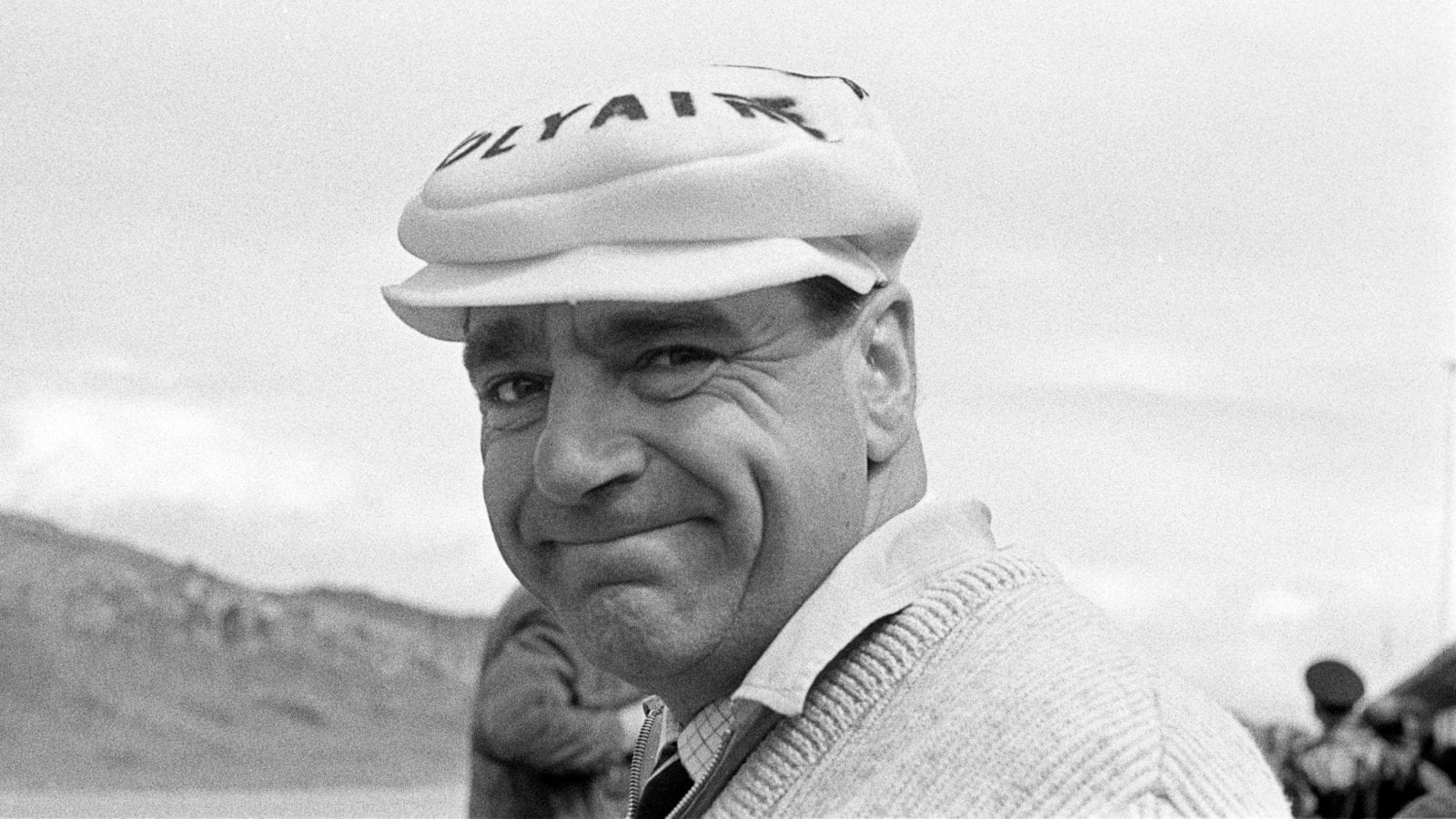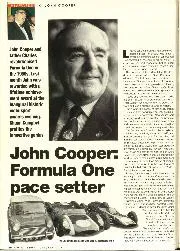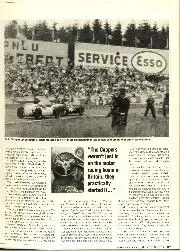“For 1961,” said Cooper, “we had new Fl rules, with a cut in engine size from 2.5 to 1.5 litres, and we hadn’t a hope of being competitive with Ferrari. So I started thinking again about Indy. We had a couple of races in the States late in 1960, and it seemed a good opportunity to have a run at Indianapolis.”
So it was that one day in the Fall a station wagon pulled into the Speedway. On its trailer was this tiny green car with two white stripes down the nose. “Jack world champion or not had to take his Rookie Test. His first flying lap was about 130mph when it should have been 100! Harlan Fengler was the man in charge in those days, and he gave Jack a real bollocking, told him he was mad, and did he realise this was the Indianapolis Motor Speedway? ‘What’s the problem?’ Brabham said. ‘It’s only four left-hand comers’. I’ll never forget the sight of Fengler’s face when he said that.
“Jack got up to about 144mph, and then Ward tried the car. He said, John, that is the Indycar of the future. You must do the race next year — but you’ve got to find more horsepower’.
“Brabham and I decided we didn’t have much to lose, bearing in mind the change in the Fl rules. Bugger it, we said. Let’s do it. Let’s go to Indy and have some fun!”
Through his friend Frank Falkner, Cooper met Jim Kimberly, of the Kleenex family, who agreed to back the project to the tune of $25,000. This was John’s first experience of sponsorship, and he was impressed.
“That allowed us to do it properly. We built a special car, with the offset suspension that everyone had in those days. Dunlop made us some ‘Indy’ tyres, and Climax did an engine for us. I wanted a 4.2-litre engine, like the Offenhausers, but what we got was an Fl motor bored out to 27 litres, running on a mix of Avgas and methanollt gave about 25bhp more, still nowhere near the Offys.”
Cooper remembered with affection the treatment his team received at Indianapolis. Everyone weighed in with help and advice for this curious little foreign outfit, and in qualifying John had particular cause to be grateful.
“Indy couldn’t have been much more inconvenient, because both qualifying weekends clashed with grands prix. Obviously it was preferable to qualify the first weekend, so we worked out a campaign.
On Thursday Jack ran at Monaco, to qualify, and then we left immediately for Indianapolis.”
They arrived to find everyone grief-stricken.
Tony Bettenhausen had gone out in his pal Paul Russo’s roadster in an attempt to sort out its handling, but steering failure put the car over the wall in front of the pits. Bettenhausen, one of Indy’s all-time favourite heroes, was killed instantly. “You never really knew what Jack was feeling, but I think he was a bit nervous — and he was the first man to qualify on the Saturday morning. We’d been up all night to make sure of being first in line because we had to get back to Monaco.”
After warming up, Brabham came off Turn Four to begin his run, but he never got the green and was flagged off. Had he raised his hand, as required? Yes, maintained Jack, but the starter denied having seen the signal. Whatever, the run was lost, and so was the team’s position ‘in line’.
‘That could have been desperate,” smiled John. “With our schedule, we couldn’t afford to go to the back of the queue and wait around all day. It looked as though we would have to go through all the hassle again the following weekend.”
After the aborted run, Bill Cheesbourg did his four laps in the Dean Van Lines Special — and then came Brabham again!
“It was amazing. So many people came up and offered us their place in the line. It was typical of the treatment we received the whole time we were there.” Jack ran 145.144mph, good enough for the fifth row. “Bhp was always the big problem. Jack was going through the turns virtually flat out, quite a bit quicker than the roadsters, but our lap speed was not much better than with the ordinary F1 car on our first visit Still, we were in.”
They then returned to Monaco — a police escort to the airport in Indianapolis, Kimberly’s private aeroplane to Chicago, flight to Nice. On the late Sunday morning drive along the Comiche, Jack struggled into clean overalls.
“He blew up before half-distance,” recalled John, “and I don’t think he was too upset I was pretty shattered, so I can’t imagine how he felt.”
A week later, Brabham was sixth in the Ferrari-dominated Dutch GP, then went off to the Brickyard once more, now for the race. He finished ninth, not dissatisfied, but a little disappointed, for the Cooper had run in the top six for much of the day. “We were getting better fuel mileage, and also had far less tyre wear, than the roadsters, and we reckoned to get through with only two tops, compared with the roadsters’ three or four. But our first stop was very slow. A mechanic put the right-rear wheel nut back on cross-threaded, so after that it had to be hammered all the way on and off. Took for ever.
“In the middle part of the race, Jack took it too easily to conserve his tyres and get by on two stops. In the end he needed three, so the caution was to no purpose — frustrating, but it was our first time there, and we had lessons to learn. We weren’t too unhappy; we got about $9000 for finishing ninth, and at that time you got $3000 for winning a grand prix!”



